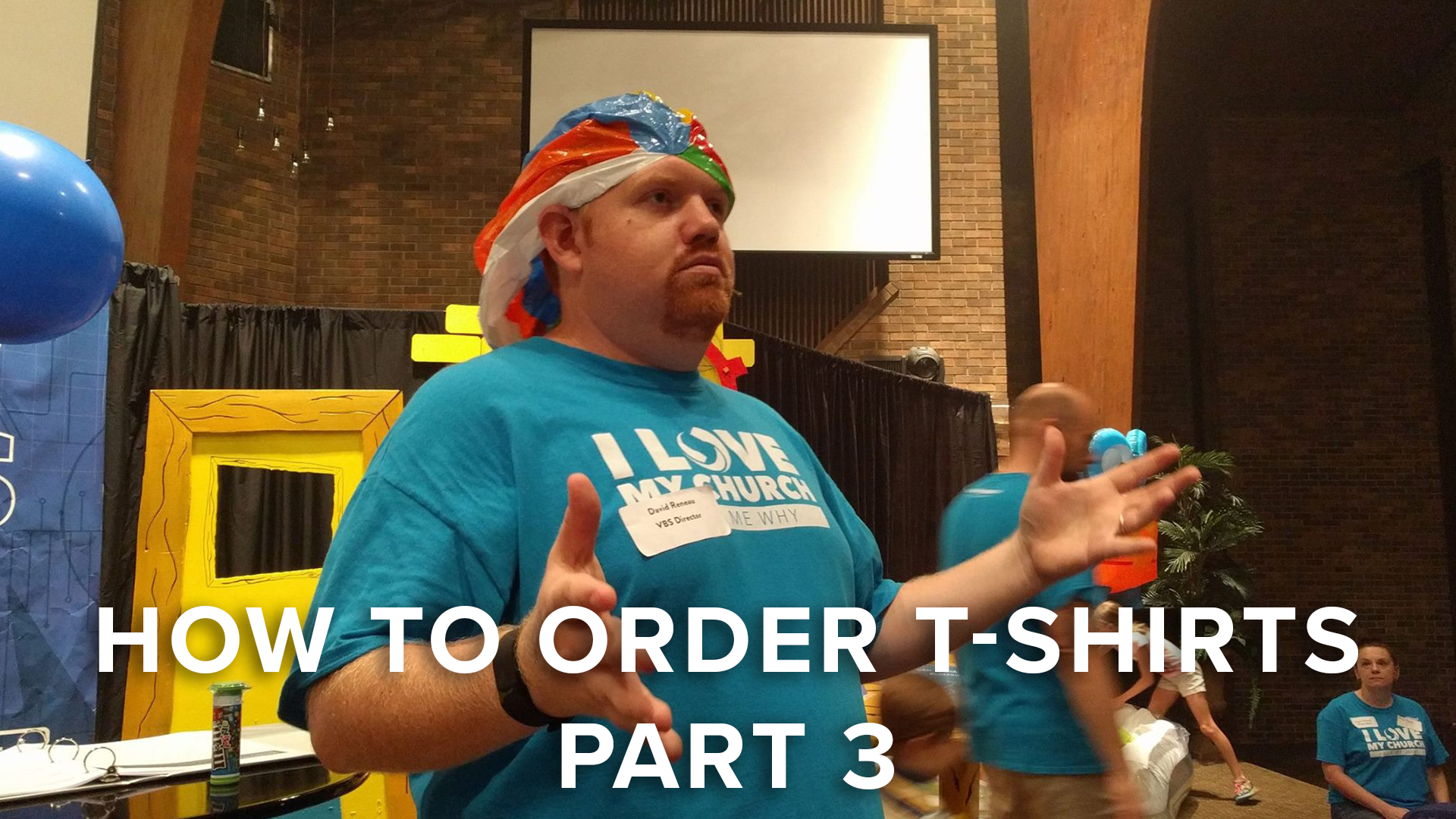How to Order T-shirts: Part 3
In my last two posts I've talked about designing your shirts and ordering the right amount. You can read those posts here:
The day is finally here. Your event is coming up and you now have several boxes full of your brand-spanking-new shirts. But how do you get them out to your people? How do you make sure they get the right sizes? What happens if they ordered the wrong size?
If you’re going to sell them, how much should you charge? Do you have to keep inventory?
It’s a lot to think about. There are no perfect systems out there, but these are some things I do to get them out to the right people at the right time, even if I’m selling them.
Giving Them Away
Let’s assume that you’re going to give these shirts away. They’re a volunteer shirt or a perk of registering early for your event. What has worked well for me is to get the shirts at least one week before your distribution date. I used to try to be helpful to the print shop and tell them to get them to me the day before I distributed, but I ran into all kinds of problems with shipping, order fulfillment, and distribution set-up.
Order Early
Do yourself a favor and order them early. Murphy’s Law states that anything that can go wrong will go wrong and in my years of ordering shirts, I can tell you that it has. Having that buffer time will help you adjust to these problems.
Distribution
When the shirts arrive, typically they’re folded into each other by sizes. You may be tempted to just put them all out on a table and let your people pick them up, but that’s a recipe for disaster. They’ll go for the top shirt and mess up your entire pile because of the way they’re folded. You’ll start off looking neat but end up looking like the Sam’s Club clothing department right before closing.
You don’t want that.
I’ve found that rolling the shirts and holding it together with one or two rubber bands with the tag on the top works best. This takes up way less space, let’s you or the person picking up easily find the shirt they’re looking for, and keeps everything neat.

Handling pre-orders
On the weekend before the service, I’ll take the shirts and put them out on a large table with name tents showing each size. I’ll also have a person manning the table to handle restocks and answer questions.
For pre-orders of particular sizes, I’ll separate those out and put a strip of paper with the person’s name who ordered it under the rubber band. For multiple shirts, I’ll put them in a gallon size Ziploc and write the name on it. If for some reason the size is wrong, I will send them to the general table to make an exchange.
I know of one church for their VBS will make boxes with the kids’ shirts and other important items in them and then hand deliver them to the houses the Sunday before the event. They get the whole church involved in the deliveries and works as an extra step of outreach.
Selling the Shirts
If you’re going to sell the shirts, you need to put a price on them. There are whole books written on this subject, and I didn’t take a single business course in college. However, I can point you in the right direction.
What Did You Pay?
First, figure out what the price per shirt is, which should be easy since it’s in the quote the print shop gave you. You don’t want to charge less than that or you’ll be losing money on every transaction. The only exception would be if you wanted to charge the same amount regardless of size. Since a 3XL could cost $1-$2 or more than a medium you have to take that into account.
In this case, I would figure out the average cost of every shirt and charge more than that. For instance, if you paid $5 per shirt, but the 2XLs and the 3XLs cost $6 and $7 respectively, then you need to charge at least $6 per shirt to make your money back.
What Do They Pay?
Now that you’ve figured out the price per shirt you need to decided how much you want to make per shirt.
One year, I wanted to give away volunteer shirts for VBS, but I couldn’t afford it. So, I also made kid shirts and sold them for 50% more than what I paid. The helped me to pay for the volunteer shirts.
When picking your price, ask yourself if you would pay that much for the shirt. Something is only worth how much someone is willing to pay for it.
That’s why those Beanie Babies you have stashed away in your closet are still worth nothing.
No one wants them.
You’re not going to make a fortune.
It’s time to say goodbye.
If you’re still not sure, go to Wal-Mart and see what they’re charging. If you’re charging more than what they are for similar shirt, you probably need to lower your price.
You’re not Kanye selling an off-white sweat shirt for $200.
At my last church we decided to drop-ship our shirts (more about that in a minute), so we don’t have to manage inventory. Because of that some of our shirts were $20+. As we talked through the price, we realized that we couldn’t make more than a $1 per shirt and even that would be stretch.
In my part of the world, church has a culture that things should be free or cheap. Keep that in mind when setting your price.
Carrying Inventory
Whether you’re selling or giving away your shirts you need to answer the question of inventory.
Every store has that back section you’re not allowed to go to with all their back stock. If you’re going to order a lot of shirts to sell or give out later, you need to know where you’re going to put them in the meantime.
Wherever you put them, they need to be in an easy place to get to and find the sizes you’re looking for. I usually put my extra stock in labeled clear plastic bins so I can easily find what I’m looking for.
The problem with keeping inventory is that it takes up a lot of space, you have the sunk cost of the shirts, and on most church budgets, you can only have one kind of shirt on hand.
To get around this you can use a service called drop-shipping.
Drop-shipping
Basically, a print shop will keep your designs on file and when you or your customer orders the shirt they print and ship the shirt directly to customer. Most print shops don’t have this service and you’ll probably have to build a webpage to show your product and allow your customers to order.
While drop-shipping does alleviate your inventory issues, the cost per shirt is significantly more. As I mentioned before, when we did this most shirts were $20+. We didn’t sell a lot of them, but we also didn’t have to spend thousands of dollars on different kinds of shirts that are not selling.
When running a story remember this axiom:
Physical shelf space is limited, but online is infinite.
I think there should be a required class in every ministry education on how to order t-shirts, but until that happens, I hope this will help.
You know you’ve done well when your people talk about your shirts and even wear them out in public. I do hope whole series has helped and feel free to leave comment for any questions you might have.



